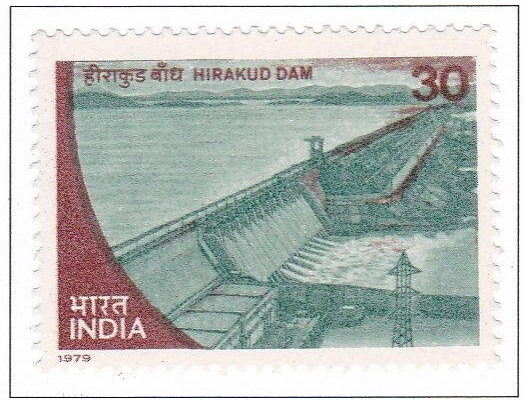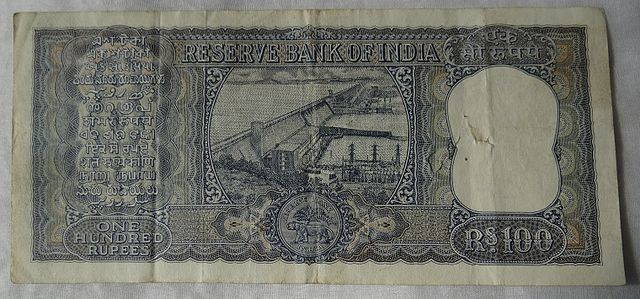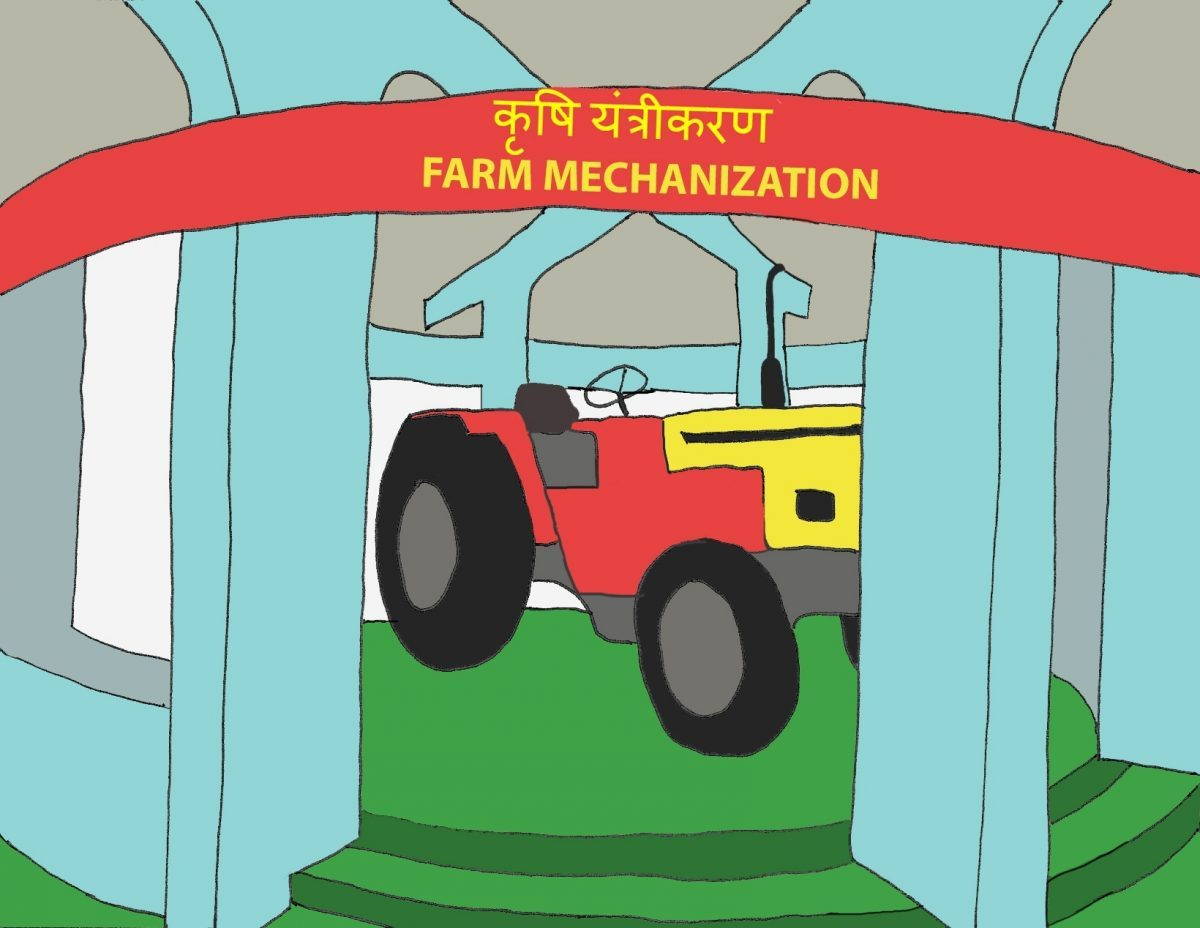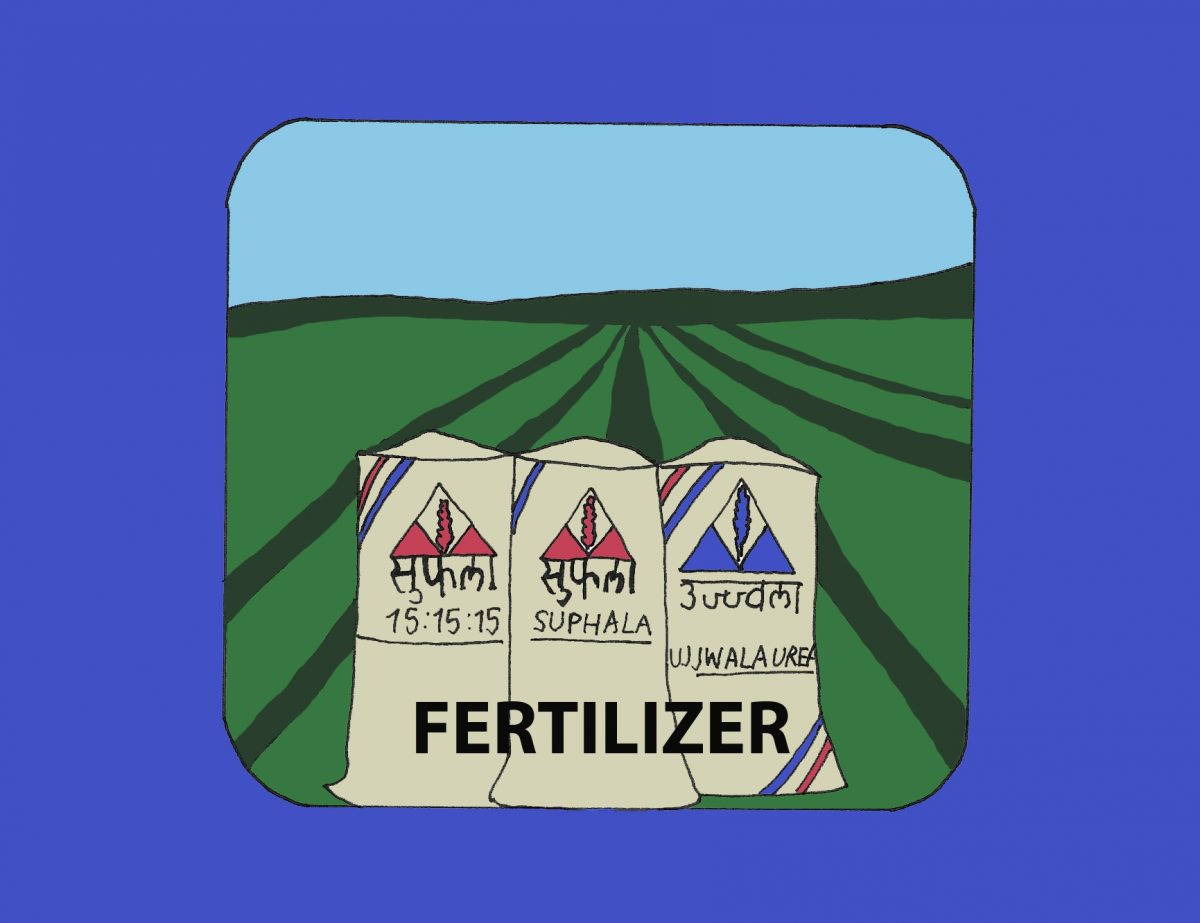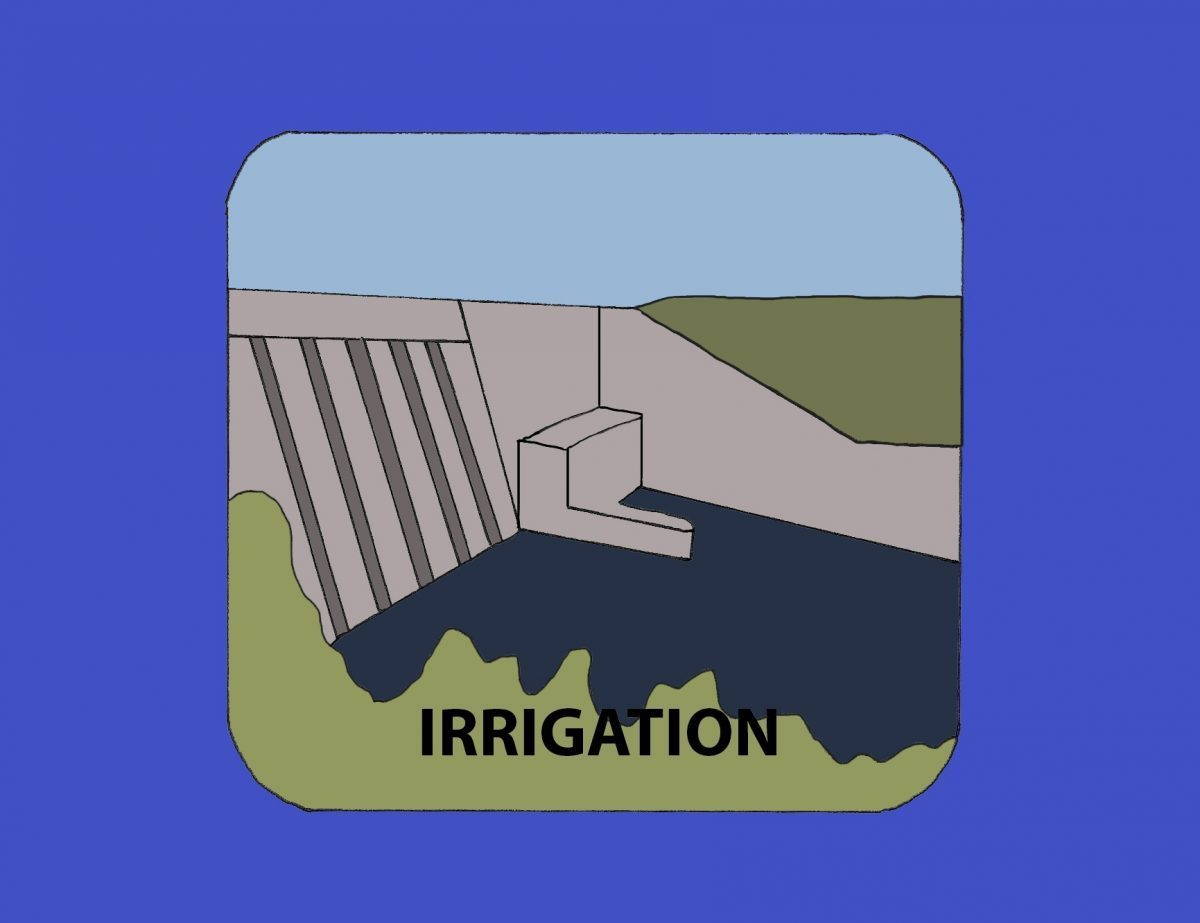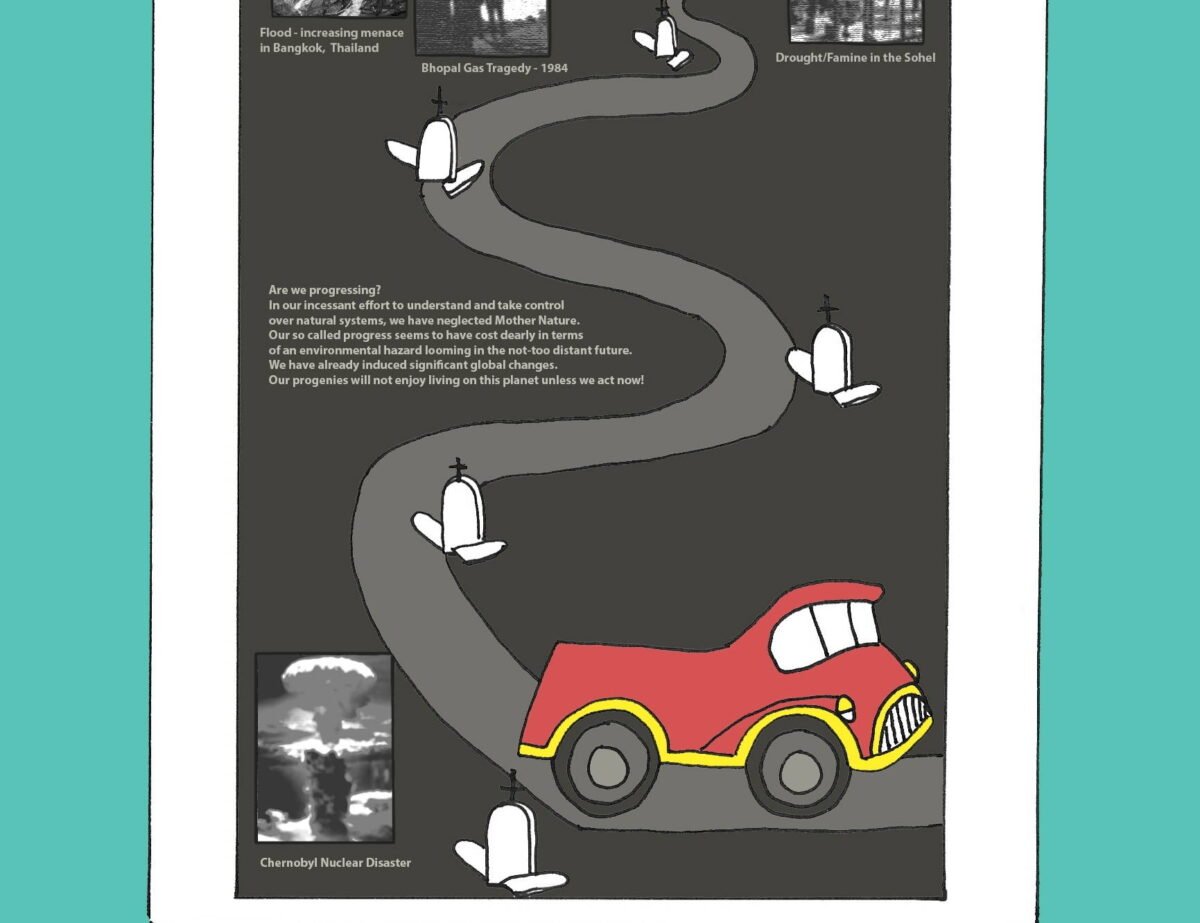Exhibiting Agricultural Development in India

If you want to WITNESS the journey of human beings through the ages and understand what kept them alive. . . EXPERIENCE the transformation from the days when India was out with a begging bowl to today, when it is giving with both hands. . . UNDERSTAND how agriculture brought about a revolution and changed the way we enjoy life. . . then there is no better place than the National Agricultural Science Museum. . . .
Welcome to the Museum
So begins a virtual tour of the National Agricultural Science Museum (NASM) in New Delhi, India. The narrator invites us to witness the revolutionary progress of modern agriculture, an invitation accompanied by visuals that seem to speak for themselves. The “journey of human beings through the ages” is portrayed by an iconic sequence of silhouettes depicting the evolution of humans from apes. India’s forlorn past is represented by an expanse of cracked soil and a cow skeleton, while a series of images of emaciated Indians, mostly children, stand in for the times when India “was out with the begging bowl.”
At the threshold between “then” and “now,” the black and white film suddenly fills with color and a sari-clad woman appears, welcoming us to this new era. The transformation is rapid and complete. Suddenly golden corn is pouring out of machines in every direction, the visual pace accompanying a building musical rhythm. Toward the end of this sweeping introduction, vibrant scenes of Indian festivals appear—the past returning yet maintained as part of a distinctly new era.
This opening sequence of the NASM’s virtual tour offers viewers a condensed version of the narrative that inhabits the museum’s exhibits. This story of development is a familiar one: science and technology enact a miraculous intervention upon a stagnated agricultural sector characterized by hunger and “backwardness.” While modernization revamps the problematic and inefficient aspects of “tradition,” this narrative of agricultural development seeks to reclaim tradition and fashion a specifically Indian vision of modernity. This vision of modernity, however, conceals India’s ongoing rampant hunger, poverty, and dispossession—conditions agricultural development has not only failed to address, but has played a significant role in producing.
To understand this particular vision of agricultural development and its exclusions, we might approach the museum as a space in which the meanings of development are imagined, visualized, and, in a sense, produced. This leads us to ask of the museum: what does agricultural development look like? How do museum exhibits steer us to “recognize” a particular meaning or image of development?
Look Beyond the Walls
While it may seem as though museums have little active role to play in the world of international development, a closer look at institutions like the NASM might reveal otherwise. The NASM is located on the campus of the Indian Agricultural Research Institute under the auspices of the Indian Council for Agricultural Research (ICAR) in New Delhi, an institution which oversees education, consulting, and research relating to agriculture. ICAR has a national presence in 100 institutes and 70 agricultural universities throughout India, evidencing its strong influence in agricultural research and policy in the country.
The museum thus acts as a storehouse of representations and narratives of agricultural development, imaginaries which shape ongoing interventions into the world of agriculture by institutions like ICAR. Museum representations thus function not merely as static symbols, but also serve as active interventions into ways of seeing and ordering the world.
What, then, does the museum teach us to see? Reflecting on my visits to the museum, I consider how the NASM reproduces particular visions of modernity and development, ones which have come to play an outsized role in discussions of agriculture in India.
Step Inside the Exhibits
Both of my visits to the NASM began the same way: lost. My visits to the museum were waylaid for half an hour or more due to the fact that the rickshaw drivers, guards, and occasional students found walking through campus did not know where the museum was located. Upon reaching the museum in both instances, it was practically devoid of visitors.
Museum representations serve as active interventions into ways of seeing and ordering the world.
Judging from my visits, it would seem that museum’s discourse of development lacked an audience, calling into question its efficacy and power to shape the minds of ordinary citizens. While I may have picked odd days to visit, I had the sense the museum does not see many visitors in spite of offering free admission to students and farmers.
While it may be the case that this particular museum falls short in indoctrinating India’s farmers and citizens with its particular vision of agricultural development, it would be premature to take this as a sign that this vision of development is no longer relevant or holds no power in Indian social and political life. Indeed, the images and narratives of development that the NASM traffics continue to hold a tremendous amount of authority and power in India today, circulating through the work of ICAR and other institutions.
Exhibit 1: Dams and the Origins of Indian Modernity
As I wandered around the museum, the first exhibit to hold my attention was on the topic of dams. Dams have long served as a symbol of development in India and the world at large. Accordingly, dams figure prominently in the story of India’s agricultural development presented at the NASM. In the museum’s diorama of an ideal “traditional” village, a large dam looms in the background, yet does not appear as an intrusion into the village landscape (see virtual tour, [6:21]). This imaginary landscape is an amalgam of old and new: traditional houses are neatly ordered amongst telephone towers with the dam in the background. Here, new technologies do not disrupt tradition, nor do they present any threat to familiar landscapes despite the fact that dam construction in India has displaced millions of people.
In an accompanying panel, dams are described as an important element of India’s post-Independence economic and agricultural development. At the same time, the text points to a longer history of dams in India. The panel states, “dam construction was one of the oldest engineering practices.” Further, “dams have been constructed in India since time immemorial” and “from evidences available from the ancient dams, many experts feel that dam engineering might have as well originated in this country.”
Click arrow to scroll through images.
The suggestion of continuity between modern dams and ancient practices produces a curious effect in the narrative of dams in India. On one hand, dams are the product of the “advent of new Technology” and a key feature of the postcolonial state. Yet at the same time, the significance of dams in contemporary India is established through a return to an Indian past where dams are thought to have originated. Locating the origins of dams within an indefinite Indian past serves to make dams a symbol of the nation and produce a continuity between pre-colonial, colonial, and post-colonial infrastructural interventions. This melding of nationalistic and modernistic resonances of dams make them a potent icon of India’s development.
Exhibit 2: Self-Sufficiency in Agriculture
While dams are perhaps the most iconographic symbol of India’s modernity, they belong to a whole suite of high modernist symbols of India’s development. Here, a high-modern ideology—an unyielding faith in the power of science and technology to control and conquer nature—is represented in a number of images—dams, factories, satellites, laboratories, tractors—that were ubiquitous in the NASM. For example, the story of farm mechanization, represented by a large, shining tractor, occupies a central spatial and narrative role in the story of Indian agriculture.
Click to enlarge image.
The particular visual logic of the exhibition is most condensed in an interactive panel entitled “Self-sufficiency in food production.” The caption of this systems diagram of components of Indian food production reads, “These factors are directly or indirectly responsible for making a country self-reliant in food production.” Visitors are instructed to “Press buttons near each visual and see how these factors are interrelated to each other and ultimately help the country in becoming self-sufficient in food.”
When each button is pressed, red lines running between the elements light up to demonstrate their connections. Each component is represented by an image and a caption. For instance, fertilizers are represented by bags of synthetic fertilizers montaged onto an abundant crop field. Communications are represented by a photo of a large satellite dish montaged with a photograph of an Indian man using a cellphone. Irrigation is unsurprisingly represented by a megadam. The research component of the diagram depicts scientists in lab coats manipulating scientific devices in a laboratory unrecognizable as a crop sciences lab. The commonality among these images is that they consistently represent high modern and “scientific” approaches to development and agriculture. The use of montage is significant here; where images like a bag of fertilizer or a satellite dish cannot immediately communicate their significance for agriculture, they are overlaid on images—an abundant crop field and a villager on a cellphone—that make their implications for development clear.

Click to enlarge. Click arrow to scroll through images.
The use of such iconographic images tells us much about the dominant vision of agricultural development represented in the museum. One can imagine numerous other ways to depict irrigation (rainwater harvesting systems), research (participatory plant breeding), fertilizers (animal and plant wastes), and so on. Yet, the images in the exhibit were selected precisely because they have a certain currency.
This currency is attributable to a particular high modern aesthetic, one that continues to dominate projects of national and international development in India. As Arundhati Roy notes in An Ordinary Person’s Guide to Empire, the power of these images operates to erase alternative visual representations of “modernity” and “development” and thus renders alternative projects of development “amodern” or otherwise untenable. In this sense, the NASM museum diagram tells viewers how to see—how to recognize the symbols of development and how to see the linkages between them. As I pressed the buttons and watched the connections light up, I could not help but notice the irony of an “interactive” museum exhibit attempting to present such a monolithic vision of agricultural development.
Exhibit 3: An Untitled Future
As these and many other exhibits at the NASM made clear to me, the organizing vision of the museum attempts to inspire a particular narrative and affective trajectory, a history of agriculture infused with nationalism, scientific rationality, and images of technological modernity. Yet, one exhibit, apparently organized around the theme of environmental degradation, potentially subverts the NASM’s running narrative. (Not insignificantly, this area of display bore no clear title.) This portion of the exhibit seemed thematically, affectively, and spatially separate from the rest of the exhibits, occupying a marginal and cut off position from the rest of the museum displays.
Click to enlarge.
One panel in particular calls the guiding paradigm of the entire museum into question. The untitled panel scatters disturbing images from Bhopal, Chernobyl, the Sahel, and other sites of man-made disaster across a black background. Amidst these photographs, a truck is pictured driving down a sharply curving road with tombstones at every bend. The text reads:
Are we progressing? In our incessant effort to understand and take control over natural systems, we have neglected Mother Nature. Our so called progress seems to have cost dearly in terms of an environmental hazard looming in the not-too distant future. We have already induced significant global changes. Our progenies will not enjoy living on this planet unless we act now!
While the rest of the NASM possessed a strong optimism about the capacities of science to intervene in natural processes, this was the only treatment of contemporary agriculture that directly called into question the negative outcomes or potential consequences of a high modern paradigm of agricultural development. These images present a darker vision of development. The Bhopal gas disaster, widespread mercury poisoning in Japan, nuclear disasters, and desertification all point to the costs of the dominant paradigm of development and “progress.” How are we to read this panel alongside the rest of the exhibit?
The brief rupture in the narrative of the museum, though minor and likely often overlooked by its visitors, might remind us that any dominant narrative has its silences and ambiguities, spaces in which alternative visions and stories can take root. Even within institutions housing history’s “official” narratives, we might learn to look for the complex, contradictory and contested meanings of development, progress and modernity, and re-envision their futures. After all, outside the museum’s walls, in protests and other mobilizations, Indian farmers and activists are fighting for such an alternative vision.
Featured Image: The National Agricultural Science Centre Complex, Pusa, New Delhi, India. Photo by ILRI/ Susan MacMillan, 2016.
Eden Kinkaid is a Ph.D. candidate in the Department of Geography at the University of Arizona. Eden has conducted fieldwork on issues of organic agriculture and agrarian change in Uttarakhand, India for several years. They are also currently researching the impacts of COVID-19 on local food systems in Tucson, Arizona. Website. Twitter. Contact.
